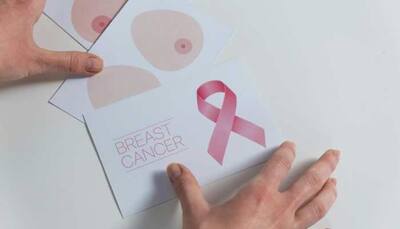In a recent Heliyon study, researchers reviewed the application and utility of traditional medicinal plants in treating gynecological complications and sexually transmitted infections (STIs) in Pakistan. Study: Folklore use of medicinal plants for the treatment of gynecological diseases in Pakistan-a review . Image Credit: Santhosh Varghese / Shutterstock.
com Medicinal plants in Pakistan Gynecological complications and STIs continue to threaten women’s health throughout the world, particularly in developing countries. Some of the key challenges in these nations include limited access to modern medical facilities, poor infrastructure, socioeconomic deprivation, and long-established cultural norms. Medicinal plants have been historically used for home remedies and primary medications in rural areas of developing countries.

In fact, current estimates indicate that about 80% of people living in rural areas remain dependent on herbal medicines. Pakistan has a rich flora with 1,572 genera and 5,521 species, most of which are limited to the regions of Hindukush, Himalaya, and Karakorum. Furthermore, Pakistan has 28 herbal processing units that use medicinal plants to produce various formulations, including 75 extensively manufactured crude herbal products.
A significant proportion of women in Pakistan’s rural communities use herbal medicines to treat their illnesses. These women often experience gynecological problems due to poverty, unhygienic living conditions, and hard physical labor. Medicinal plants used in Pakistan Existing evidence indicates that Pakistani rural populations use 217 plant species from 89 families for various health purposes.
The most prominent plant family is Apiaceae , which includes 19 medicinal species, followed by Asteraceae, Fabaceae, Lamiaceae, Solanaceae , and Amaranthaceae families. Herbs and trees account for 58% and 23% of all medicinal plants used in Pakistan, respectively, followed by 17% of shrubs and 2% of subshrubs. Most of these plants are used to treat women’s illnesses.
Leaves, flowers, seeds, fruits, roots, bark, and stems account for 29%, 22%, 14%, 14%, 13%, 7%, and 5% of all plant parts used, respectively. Related Stories Physical activity and positive affect boost cognition in women with fibromyalgia despite pain Study finds microplastics in blood clots, linking them to higher risk of heart attacks and strokes New AI method accurately predicts male infertility from hormone levels, bypassing need for semen analysis Studies investigating the medicinal values of various plant parts have reported that leaves are used to treat menstrual disorders and menopausal symptoms. In contrast, flowers are used to manage menstrual discomforts and regulate menstrual cycles.
Seeds are often used to treat fertility problems and hormonal imbalances, while fruits are used to improve women’s wellbeing during pregnancy and lactation. Roots are also used to treat uterine issues, whereas barks and stems are used to treatment various gynecological complications. Plant-derived bioactive compounds in gynecological complications Existing literature indicates that plant families predominantly used in Pakistani rural regions contain a wide range of bioactive compounds with diverse biological and therapeutic properties.
The major bioactive compounds found in medicinal herbs include steroids, flavonoids, polyphenols, tannins, saponins, glycosides, terpenoids, and anthraquinones. These compounds have shown therapeutic efficacy against various gynecological disorders including polycystic ovarian syndrome (PCOS), infertility, pubertal changes, menopausal symptoms, postmenopausal syndrome, and low breast milk production. Many of these compounds have been shown to mitigate blood flow-related complications and promote blood circulation.
Thus, these compounds exhibit unique properties that are suitable for treating gynecological issues characterized by blood statis syndromes, such as qi stagnation and blood stasis (QSBS) primary dysmenorrhea. Bioactive compounds found in the Fabaceae family of plants have shown therapeutic efficacy in managing PCOS, a highly prevalent gynecological complication that affects one in ten women worldwide. In fact, Fabaceae -derived compounds can significantly reduce the ratio of luteinizing hormone (LH) and follicle-stimulating hormone (FSH) in PCOS patients.
Apiaceae plants effectively regulate menstrual flow, improve menopause-related hot flashes, and mitigate uterine infections. The bioactive compounds within these plants are also used to promote the expulsion of ‘dead blood’ and vaginal discharge after delivery, as well as reduce postpartum discomforts. Asteraceae plants are often used to maintain the menstrual cycle, reduce menstrual pain, prevent menopausal hot flashes, and treat various menstrual disorders.
Additional indications for these plants include sexual insufficiencies, preventing miscarriages, reducing breast swelling and pain, and increasing milk flow. Bioactive compounds found in the Lamiaceae plant family may ameliorate amenorrhea, menstrual pain, postpartum pain, and labor delivery, as well as remove ‘dead blood’ and vaginal discharge after delivery. Solanaceae plants are often used to treat STIs like gonorrhea, stop excessive bleeding after delivery, and reduce breast inflammation.
The bioactive compounds present within these plants are also effective in treating female impotency and sexual weakness. Amaranthaceae plants are used to treat various menstrual complications, such as pain, abnormal vaginal discharge, and absence of menstrual period. These bioactive compounds may also reduce postpartum discomfort and increase milk supply in breastfeeding women.
Conclusion The study findings provide important information that can facilitate the identification of novel bioactive compounds for the future development of natural medicines for gynecological complications. Nevertheless, additional studies are needed to investigate the biological and pharmacological activities and safety profiles of these plants. Khadim, S.
, Malik, K., Kazmi, A., et al.
(2024). Folklore use of medicinal plants for the treatment of gynecological diseases in Pakistan-a review. Heliyon .
doi:10.1016/j.heliyon.
2024.e34869.


















